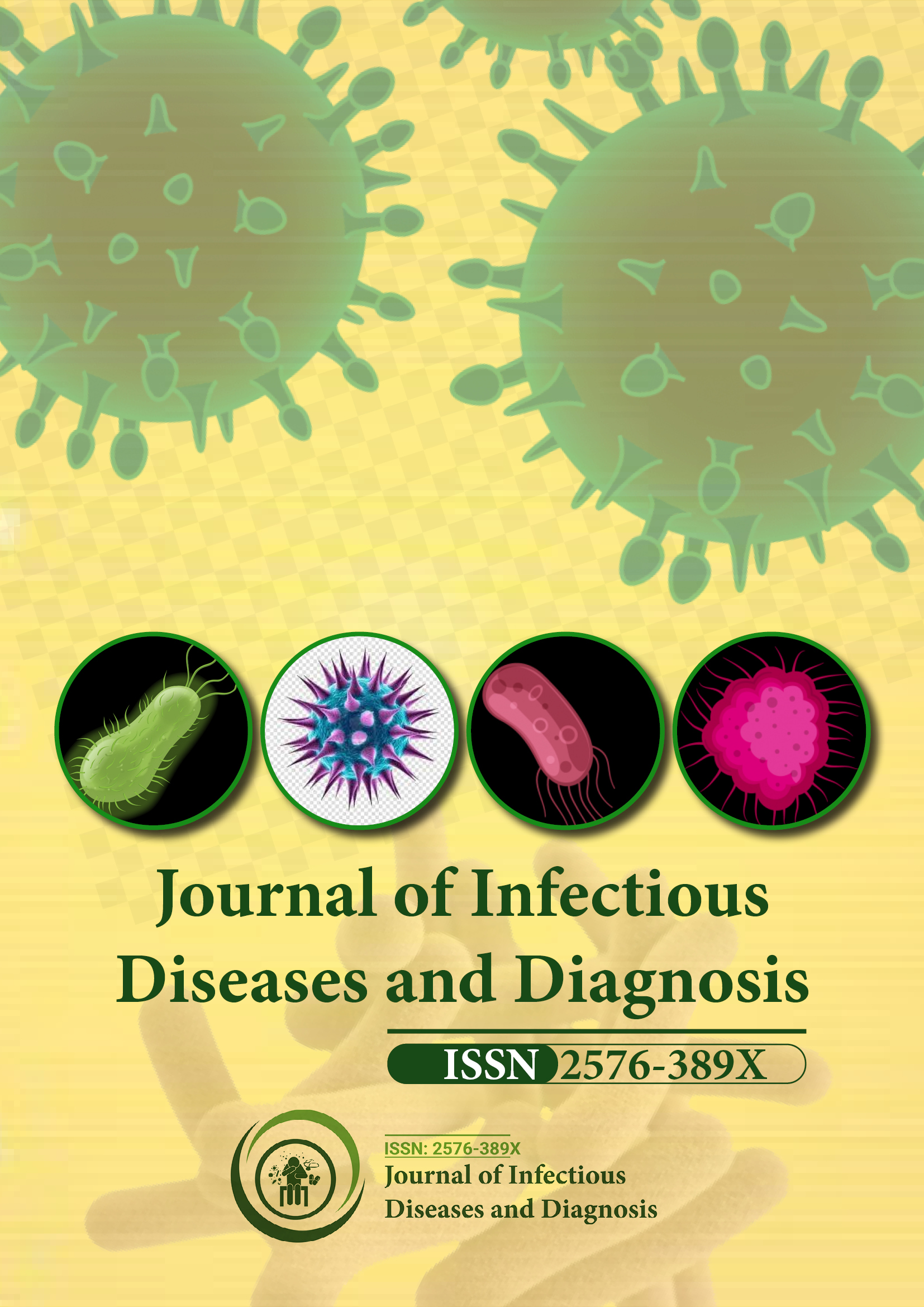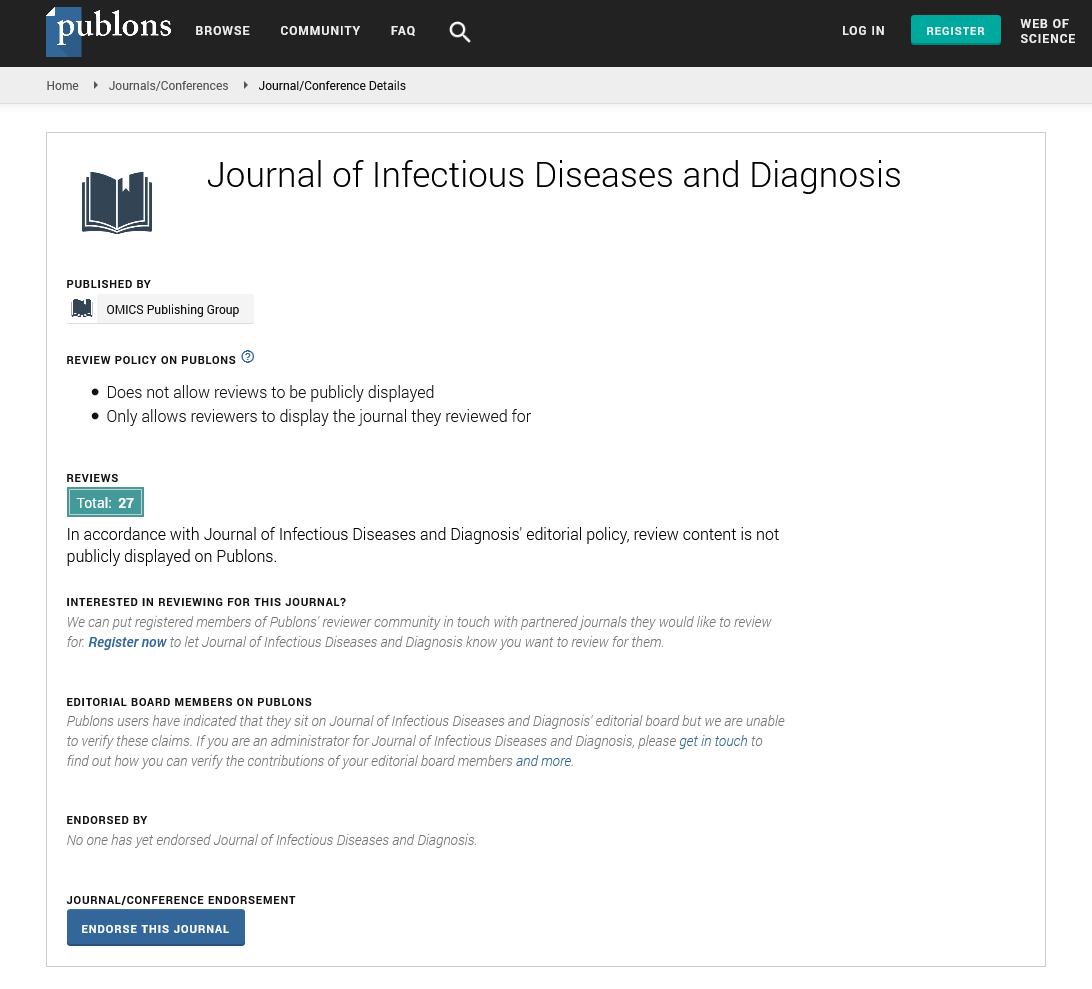Indexed In
- RefSeek
- Hamdard University
- EBSCO A-Z
- Publons
- Euro Pub
- Google Scholar
Useful Links
Share This Page
Journal Flyer

Open Access Journals
- Agri and Aquaculture
- Biochemistry
- Bioinformatics & Systems Biology
- Business & Management
- Chemistry
- Clinical Sciences
- Engineering
- Food & Nutrition
- General Science
- Genetics & Molecular Biology
- Immunology & Microbiology
- Medical Sciences
- Neuroscience & Psychology
- Nursing & Health Care
- Pharmaceutical Sciences
Editorial - (2021) Volume 6, Issue 3
Catastrophic Disease Events in Marine Mammals Generally Caused by Viruses
Edain Ahmed*Received: 23-Sep-2021 Published: 14-Oct-2021
Editorial Note
As the COVID-19 pandemic sweeps across the globe, people are starting to understand, at a very personal level, the ways by which infectious diseases can devastate life. However, Disease flare-ups are not confined to simply people or to life on land. We are maybe more ready than ever to the cataclysmic effects of infectious disease in the both human and animals. Our task currently is to start to get what drives these occasions, especially in species like marine warm blooded animals, where our insight is much more restricted. In 2000, more than 10,000 imperiled Caspian seals passed on in under a four-month span. Infectious disease instigated mass mortality events are known to afflict an assortment of animal varieties, including invertebrates, birds, fish, and both land and aquatic mammals. However, these events in aquatic mammal’s blooded animals are understudied compared with their territory counterparts. Devastating number of fatalities inside similar species throughout a brief period of time, which is additionally subject to the species' protection status and populace size. Beyond the deaths of individual animals, mass mortality evets can start a cascade of events with serious environmental repercussions. Affected populations are regularly at a more serious danger of neighborhood annihilation, and changes in local area design can agitate an ecosystem's balance. To assess the role of life history characteristics, they focused on sociality, trophic level an animal categories' situation on the natural way of life, and living space broadness. While sociality and trophic level didn't appear to be associated with mass mortality events in marine mammal’s blooded animals, territory expansiveness did. The greater part of the species encountering mass mortality occasions were pinnipeds, a request for semi-sea-going species that incorporates seals, ocean lions, and walruses. Pinnipeds connect the earthbound and sea-going interfaces and may have a more prominent openness to microbes that happen across these land types. For example, seals and ocean lions are regularly seen on sea shores, rough shorelines, and moors; however they likewise spend a critical piece of their lives in water.
The chemical balance of the sea is changing. In Polar Regions, melting sea ice melting sea the salty sea water in a process called freshening. This can result in decreased prey abundance, since species like fish, mollusks, and crustaceans are sensitive to little changes in the climate. With less food to benefit from, marine mammals might experience the ill effects of dietary pressure, bringing about diminished invulnerable capacity and a more prominent vulnerability to illness. Marine mammal’s blooded creatures address significant sentinels of sea-going wellbeing by giving data fundamental to overseeing dangers to these weak biological systems. Tending to the main drivers of environmental change will be of basic significance as we diagram a way ahead in dealing with these species. Of the entire marine well evolved creature species that experienced an irresistible infection prompted mass mortality occasion, the investigation discovered that 37% were recorded as imperiled or defenseless against annihilation. This work highlights the basic danger infectious disease can pose to marine species and the possible significance of climate change as a wide reaching driver of this process. Here, our role is complex as we contribute straightforwardly to our changing climate, address climate change, protect species and environments through effort and innovation humanity at its best.
Citation: Ahmed E (2021) Catastrophic Disease Events in Marine Mammals Generally Caused by Viruses. J Infect Dis Diagn. 6:e112.
Copyright: © 2021 Ahmed E. This is an open-access article distributed under the terms of the Creative Commons Attribution License, which permits unrestricted use, distribution, and reproduction in any medium, provided the original author and source are credited.

